Apple Scionwood
Welcome to our collection of apple scionwood. We grow over 130 varieties of apples and offer scions for grafting from most of them.
For filtered search - we have apples organized by categories and tags. Use the filter below to select as many categories and tags as you want to narrow down your search. For the most specific results, select just one category and multiple desired tags. Full functionality is coming soon - we are continuing to update each variety with all the correct categories and tags. Feel free to reach out with questions about specific varieties.
Categories:
Cider apples (good for hard ciders)
Dessert apples (also known as snacking apples, good for fresh eating)
Baking/saucing apples (also known as culinary apples, good for canning, preserving, baking, and cooking)
Red Flesh (red or pink flesh on the inside)
Tags:
Cold hardy (good for extreme cold or Northern climates)
Disease-resistant (has moderate to strong resistance to one or more common apple diseases)
Harvest period early, mid, or late
Heat or low-chill tolerant (good for extreme warmer or Southern climates)
Heavy producer
Pollination Groups A through E
Ordering is now open for this season. Order now for shipping between January and April 2026. Questions? Please contact Christina Fordyce at 503-930-8280 or fordycefarminc@gmail.com.
Scion wood is sold by the piece, except for some varieties that are available in bulk quantities of a 20-pack. We always seek to provide sticks that are close to 12” and pencil thickness at the base but every variety grows differently and so thickness varies.
We ship only within the United States. We do not ship internationally. Rootstock does not ship to California.
Return/Refund Policy: We do not offer returns or exchanges on scionwood or rootstock. We have a 30-day return policy on our clippers (must be unused and returned in original packaging. Return label must be requested). If we have made an error on the scionwood variety you have ordered, we will refund or replace the incorrect item. Claims for errors in your order must be presented within 30 days of receipt of your order. Claims must include a picture of the error and sent to us by email at fordycefarminc@gmail.com. Failure to assert claims within 30 days after order receipt renders this warranty null and void.
This apple was developed in Japan in the mid-1900s - also known as Tohoku 3. These red apples are on the smaller side but packed with flavor when harvested just right. They hang well on the tree so it’s best to harvest as late as possible for enhanced flavor. They don’t keep as long in cold storage so are best for eating right away. Great for fresh eating, this apple is also fantastic in sauces, pies, and dried. Late harvest period.
Note: this apple scionwood is harvested from Fordyce Farm inc. that we operate in Salem, OR. Fordyce Farm inc. is not certified organic.
Categories: dessert apple, baking/saucing apple
Tags: Disease-resistant, Harvest period mid, Pollination Group D
This apple originated in the Ukraine in the 1700s. It made it’s way to the U.S. in the 1800s and over the Oregon trail to Oregon in the mid-1800s among the first named varieties brought here. It’s a lovely and tasty apple that has a fair amount of disease resistance. Ours grow in an non irrigated part of the orchard and survived hot dry summers with ease. Generally they produce only enough for our use so we don’t often stock scionwood for these.
This late August apple is disease resistant, productive and vigorous. A 1930s German apple has Cox Orange Pippin and the Duchess of Oldenburg as its parents. It’s an apple with a margarita trapped inside. It’s so juicy it drips down your chin and yet it’s still firm. It’s so refreshing with its limeade flavor.
Categories: cider apple, dessert apple, baking/saucing apple
Tags: Heat/low-chill tolerant, Disease-resistant, Heavy producer, Harvest period mid, Pollination Group B
Red-fleshed, dark red skin these apples are in high demand from both chefs and canners. These have the flavors of raspberries and blackberries in them and are relatively tart. These ripen in mid-August and have the best disease resistance of our red-fleshed apples. We have had relatively good success grafting these but not 100% success. Scion pieces tend to be slightly skinnier than a pencil.
Categories: Red Flesh, dessert apple, cider apple, baking/saucing apple
Tags: Disease-resistant, Harvest period early, Pollination Group D
Ambrosia are a sweet, late season apple. They are quite susceptible to scab. When added to fresh cider, even in amounts as low as 10% they give a lovely creamy consistency. The came out of British Columbia in the 1990s.
Categories: dessert apple
Tags: Harvest period late, Pollination Group D

READ FULL DESCRIPTION. These apples with nearly black skin are from Bentonville, Arkansas and the 1870s. We think the ones from our orchard have a distinctly spicy flavor. These are coveted by cider makers for their complexity and intensity. These are very late season apples. These trees are slower growing and we have a small number of them so scion wood is limited and tends to be smaller than average.
NOTE ABOUT ORDERING: Some pieces we have in stock on this variety are only about 4” long. We usually try to cut a foot long piece, but these are slow growing and we usually sell out of the long pieces. The small pieces are still big enough to graft, but we are offering them at a discounted price because of the smaller-than-standard sizing.
Categories: cider apple, baking/saucing apple
Tags: Harvest period late, Pollination Group D, Disease-resistant
From Gloucester, England and the 1700s. Rowan Jacobson describes the flavor of these as “like a tart homemade lemonade.” He suggests you wait until December to eat these but that depends entirely on how much you like tartness in an apple. These highly russetted apples are reasonably disease resistant. The trees are both productive and vigorous. The scion from them tend to be thicker than a pencil.
Categories: dessert apple, cider apple, baking/saucing apple
Tags: Disease-resistant, Harvest period late, Pollination Group D
This is an old American variety from the 1750s and Massachusetts. It’s a flavorful apple that is also fairly disease resistant and reasonably productive. It was a very popular apple in New England until a terrible freeze in the 1930s wiped out many of the trees. We’ve found this apple to be very resilient in the Pacific Northwest. The scion wood is average and we’ve had great success grafting this apple.
Categories: dessert apple, cider apple
Tags: Disease resistant, Heavy producer, Harvest period late, Pollination Group D
From the Netherlands of the 1850s. We’re super fans of these apples. They start out tart but age into a true nutty but intensely apple flavor. These also make a fantastic single varietal hard cider. The trees are productive and highly disease resistant. They are vigorous growers and graft easily. The apples are fantastic eaten fresh, baked or fermented. We think these should be on every homestead and in every commercial orchard.
Categories: dessert apple, cider apple, baking/saucing apple
Tags: Disease-resistant, Heavy producer, Cold hardy, Harvest period mid, Pollination Group C

Originally found as a wild seedling in Switzerland in the 1880s. This is a good, medium sized dessert apple. Yellowish green under a deep red. This variety can tend to be biennial. Responds well to pruning.
Categories: baking/saucing apple, dessert apple
Tags: Harvest period late, Pollination Group D
A pretty apple with cream yellow background and a nice rosy blush. We love this southern apple for its natural resistance to the fungal diseases that injure apples easily in the Willamette Valley. These sweet fruity apples are a favorite on the farm and with the specialty grocers in Portland. These apples are one of our favorites for combining beauty and flavor. These are early apples and usually ripen here in mid-August. We’ve had good success grafting these apples. The blossoms are resistant to a late frost.
Categories: dessert apple
Tags: Disease-resistant, Southern US roots, Harvest period early, Heat/low-chill tolerant, Pollination Group C
From 1740 England. We love their intense flavor, nuttiness and bit of spice. In England these are popular for apple charlotte. It is one of the parents of the legendary Cox Orange Pippin. These produce every other year but their apples are almost always perfect. They resist all the fungal diseases here. We’ve had success grafting them. They are a very late apples, among the last to ripen in our orchard.
Categories: dessert apple, baking/saucing apple
Tags: Disease-resistant, Heavy producer, Harvest period late, Pollination Group D
These are out of New England in the late 1700s. They have a powdery blue bloom. Their unique flavor has been described as tropical. Henry David Thoreau listed them as a favorite cultivated apple, being more like the wild ones. These have some disease resistance, are late season apples and fairly vigorous growers.
Categories: dessert apple, baking/saucing apple
Tags: Cold hardy, Harvest period late, Pollination Group C
Firm, very late season apple that will survive temperatures as low as 26 degrees and just get sweeter. Commercial apples from the 1950s and New Zealand. Very scab prone in wet conditions.
Categories: dessert apple, baking/saucing apple
Tags: Harvest period late, Pollination Group E
Bramley’s Seedling: this is a classic English cooking apple. They are great for growers as they’re productive, vigorous trees. The apples are very resistant to disease and often grow quite large. They really are among the best apples anywhere for sauce and pies. The scion wood is hardy and fairly thick. We have bulk quantities of the scionwood. Contact us for pricing on orders over 60 pieces.
Categories: baking/saucing apple, cider apple
Tags: Disease-resistant, Heavy producer, Harvest period mid, Pollination Group D
From Normandy, France 1598. These are prized by French chefs for baking. Hard, crunchy and intensely lemony. These are late season apples with a lovely lobed shape. They make a wonderful single varietal cider. We find these apples modestly challenging to grow organically being somewhat susceptible to scab and scale. We have had much success grafting this variety.
Categories: baking/saucing apple, cider apple
Tags: Harvest period late, Heavy producer, Pollination Group D
Queener Farm has only offered Cameo apple scionwood for a couple years. For years the trees had been too scab infected to produce marketable fruit and lacked vigor. After the farm switched to a nutrient based program, they responded with gusto. The apples were near perfect and the trees thrived and grew. They also handled the “heat dome” of 2020 with temperatures reaching 115 remarkably well. They had no protection and experienced minimal sunburn and no bitterpit response. If you are in an area with little scab or you have a program for dealing with it these can be a lovely addition to your orchard.
Categories: dessert apple, baking/saucing apple
Tags: Harvest period mid, Pollination Group A
Since other Centennial Crab apples are not sweet and ours are very sweet we have considered renaming these Sweet Centennial Crabs. These seem slightly larger and yellower than the ones elsewhere as well. These are little plum shaped fruits with rose blush over pale yellow. These are slow growing trees that seem to stay small even on larger growing rootstock. They are challenging to graft and their growth patterns are unique among the apples in our orchard. However, we’ve found them to be well worth the trouble. They are lovely, delicious, disease resistant and consistent producers.
Categories: dessert apple
Tags: Disease-resistant, Harvest period early, Pollination Group A
These originated in the 1930s from a seedling of a Golden Delicious raised by Lloyd Lonburg of Oakville, WA - so these are a PNW native! They bruise easily, so handle them with care! Great for fresh eating and pies. Lasts about 2 months in cold storage.
Note: this apple scionwood is harvested from Fordyce Farm inc. that we operate in Salem, OR. Fordyce Farm inc. is not certified organic.
Categories: dessert apple, baking/saucing apple
Tags: Disease-resistant, Heavy producer, Harvest period early, Pollination Group D
These apples look and taste a little quince like. They are coveted for cooking but are also tasty as a sliced up dessert apple paired with a nice cheese. They hold reasonably well and so you can display them in a bowl for a while before eating them. These tend to ripen over several weeks. We pick them from early August into September. They have decent disease resistance and are productive every year. Excess heat can make them drop their fruit early. We’ve found them quite easy to graft.
Categories: dessert apple, baking/saucing apple
Tags: Harvest period early, Pollination Group D
A modern apple from Germany, this is a cross of three of our other apples, Cox Orange Pippin, Duchess of Oldenburg and Golden Delicious. It doesn’t look like any of them, being more pointed than all of them with a creamy background and some rose red striping. It’s odd that this apple has as mild a flavor as it does and that, unlike its parents, grows well in hotter, drier climates. The scion wood tends to be skinnier than most.
Categories: dessert apple
Tags: Heat/low-chill tolerant, Harvest period late, Pollination Group D
From Cornwall and introduced in 1813. They are noted for the aromatic flavor that contains a hint of clove. The word Gilliflower comes from the French word for clove.
Categories: Dessert apple
Tags: Harvest period mid, Pollination Group D, Heat/low-chill tolerant
From Geneva, New York 1898. It was bred by S.A. Bach, the author of the famous “Apples of New York.” It may be unfamiliar but it’s actually the 15th most commonly sold apple in the U.S. While these grow well in the eastern part of the country we find them to be slow growers, modest producers and not exceptional in any way. The scion is minimal and not likely to be very long or thick.
Categories: dessert apple
Tags: Pollination Group C, Disease-resistant, Harvest period mid, Cold hardy
A lovely round apple with a slight orange cast. Introduced in 1825, it’s considered the benchmark for apple flavor. They are notoriously disease prone but we've found they are easier to get nice apples from than many others with little disease resistance.
Categories: dessert apple, cider apple, baking/saucing apple
Tags: Heavy producer, Harvest period mid, Pollination Group C
Bitter, disease resistant cider apple. A highly favored bitter cider apple. These are flavorful and disease resistant. The trees are slow growing and biannual bearing. The produce very few pieces of scion wood each year.
Categories: cider apple
Tags: Disease-resistant, Heavy producer, Harvest period late, Pollination Group D
Devonshire Crimson Queen is extremely rare in the U.S. We adore these apples as they are delicious, early, disease resistant and seem unmolested by insects. These apples start out fairly sharp and get sweeter as they sit. Late in their season, or after a month or storage, they have a distinct berry flavor. On the tree they will look as though they range in color from solid red to totally green. Their season stretches over several weeks and so we start out picking only the solid red and come back every few days to pick just those. Only in the last pickings should those less red apples be harvested. When these are deepest red, especially in cooler seasons when they can ripen slowly, they will have lovely dark pink blush inside the flesh that starts near the skin and can continue all the way to the core. Their strawberry flavors get stronger later in their season and after storage. These apples have been fabulous every single season regardless of new insects, hail, heat waves, massive rain and any other weather anomaly we’ve experienced.
Categories: dessert apple, cider apple, Red Flesh
Tags: Disease-resistant, Heavy producer, Harvest period early, Pollination Group B
It originated in the U.K. in 1949 and is likely from a seedling of the Worcester Pearmain. It was first named Thurston August for the town of a nursery it was raised in and for the month it could produce, being an earlier variety. It was renamed to Discovery in the 60s. This delicious apple has a sweet tart flavor some also describe as strawberry-like. Very slow to oxidize when slices exposed to air.
Categories: baking/saucing apple, dessert apple
Tags: Pollination Group D, Disease-resistant, Harvest period early
These small apples are rather oval-shaped and the size of a golf ball or smaller. They are a nice deep red and have a bloom. These are sweet-sharp and a little bitter and is best used for jellies, as a sweet-sharp in ciders, or as an ornamental. (We will often use it in holiday centerpieces!) It originated in St. Petersburg, Russia in the 1890s. Its heavy pollen and long bloom period makes it an excellent pollinator for either home orchards or large scale operations.
Categories: cider apple, baking/saucing apple
Tags: Disease-resistant, Heavy producer, Harvest period mid, Cold hardy
An 18th century Russian apple. These early apples are wonderful for sauce and are recommended for drying. These are quite productive trees but are fairly disease prone. They have improved under organic care but they should be watched closely for fire blight. They tend to have less scab than some but they also will drop quickly if there is excess heat. They add nice aromatics to a cider.
Categories: cider apple, baking/saucing apple
Tags: Heavy producer, Harvest period early, Pollination Group B
Information on Dummelow Seedling is fairly scarce and contradictory. We are now fairly certain these are not the traditional English Dummelow. That said, they are in two places in our orchard, clearly labeled and planted at two different times and the apples are the same. They were planted by an English orchardist. The oddest shaped apple we grow with a flavor that is completely unique. It’s an apple, sort of, it seems to have some pear genes in it. We enjoy its floral qualities. These have blooms with no petals and we’ve not seen bees pollinating them but they do set reasonable amounts of fruit. A very fun apple for those who go for a wildly diverse orchard.
Categories: baking/saucing apple, dessert apple
Tags: Harvest period early
These are intensely flavored late season apples. They are entirely russet covered. The trees are disease and pest resistant and are biannual bearers. The apples taste like an amazing, complex, cider and are quite tart. They also ferment into the most complex, single varietal cider we’ve made. It’s a classic English apple from the Victorian era. As a dessert apple they are quite tart, but I would eat them with a caramel sauce or served with a soft cheese and nuts to balance and mellow the strong flavor.
Categories: cider apple, dessert apple
Tags: Disease-resistant, Heavy producer, Cold hardy, Heat/low-chill tolerant, Harvest period late, Pollination Group C
A sweet apple with juicy white flesh and a crisp texture. We find these to be delicious to eat and nice for the base of a hard cider but their susceptibility to fungal diseases makes them a challenge in our warm wet springs. They are, however, resistant to blight and rust. Early to bloom but late to ripen.
Categories: dessert apple, cider apple, baking/saucing apple
Tags: Disease-resistant, Heavy producer, Harvest period late, Pollination Group C
This is a modern apple that has many wonderful qualities. Great disease resistance, good flavor and firmness. Known for their ability to keep for months in a modern fridge. Late October ripening. Our trees of these are fairly young but we’ve found them to be fast growers that produced quite young. Our top grafted trees produced more than 50lbs each on their third year.
Categories: dessert apple
Tags: Disease-resistant, Heavy producer, Harvest period late, Pollination Group D
This variety is from 1920s Germany and we’re big fans of these apples. They’re crunchy, tasty, aromatic and almost always as near to perfection as can be expected in an organic orchard. Child of the Duchess of Oldenburg. These have resistance to anthracnose. The tree is biannual but highly productive and nearly free of both scab and insect damage. It is a small, fairly late season, apple.
Categories: dessert apple, cider apple, baking/saucing apple
Tags: Disease-resistant, Heavy producer, Harvest period late, Pollination Group B
This is famous as Thomas Jefferson’s favorite apple. It’s from New York and the early 1800s. This rich, firm fleshed apple is full flavored. Its spicy taste makes it one of our favorites, it’s susceptibility to every disease apple trees can get makes it an ongoing challenge. Dark almost orange/red apples that aren’t perfect but are delicious. These will keep and are famous for being best in late December.
Categories: dessert apple, cider apple, baking/saucing apple
Tags: Harvest period mid, Pollination Group D
A modern cross of the legendary Cox Orange Pippin with lots of the orange pippin flavor and better disease resistance. They are biennial bearers for us. We also don’t find them to be completely disease resistant though better than the Cox. From England and the 1970s.
Categories: dessert apple
Tags: Pollination Group C, Heavy producer, Harvest period mid, Cold hardy
We offer two different Fuji apple mutations.
FUJI YATAKA: Late maturing, sweet, crisp, dense-fleshed apples. From Japan and introduced into the U.S, market in the 1980s. Yataka mutation ripens a month earlier than the traditional Fuji. Scab prone and needing careful thinning and pruning. Needs a long, warm ripening period.
FUJI JUBILEE: The marker is that it will bear about two weeks before Fuji Yataka. Fuji Jubilee is also marketed as September Wonder, which is when they first began to ripen in our orchard. It’s a mutation of the Yataka.
Categories: dessert apple
Tags: Harvest period late, Pollination Group D
The mysterious U.S. version of an apple that was thought to be a famous English cider apple. Foxwhelp is known for its superior hard cider and is originally from the U.K. It was discovered some time ago through DNA testing that the Foxwhelp variety that was brought to the States and catalogued by the USDA was actually NOT the famous U.K. cider bitter. So the scions distributed through the U.S. from that collection were something altogether different. This U.S. version came to be known then as “Fauxwhelp” to denote the difference. However, it has been shown to be a good fresh eating apple, saucing apple, and still excellent for cider blends. Bittersharp with some tannins, high acidity, and relatively sweet.
Read more about this infamous mix-up at Cidercraft Magazine.
Categories: cider apple, baking/saucing apple, dessert apple
Tags: Harvest period early
Sweet, juicy apples that are from New Zealand in 1934. They are a cross between Red Delicious and Kidd’s Orange Red apples.
Categories: dessert apple
Tags: Heavy producer, Heat/low-chill tolerant, Harvest period mid, Pollination Group C
So red it bleeds like a beet. This is a favorite of cider makes. It’s highly scab prone but when that is controlled it produces loads of large, tart, dark red-fleshed apples. In our top-grafted experiments this one grafts easily and trees grow and produce quickly. The blooming trees are stunning. Always this red, always large, when scab is reasonably controlled and always lovely dark pink blooms. Scion tend to be large. If you’re growing for impressive red juice for cider these are the ticket they are intense and will tint any blend.
Categories: cider apple, Red Flesh
Tags: Harvest period mid
An early, mild and slightly ginger flavored apple. These are noted not just for their flavor but the fact that they don’t brown. Related to the Golden Delicious and out of Virginia in the 1960s. In cooler summers, when they hang better, these are particularly delicious. Tip bearers.
Categories: dessert apples
Tags: Cold hardy, Harvest period early, Pollination Group A
These highly disease resistant, very productive, late season apples are favorites on the farm. Our trees have been vigorous growers that produce piles of nearly perfect apples with little attention from us. Yellow, tart, late season and good storing fruit. We hadn’t offered these before because we were keeping all the scion for our own grafting.
Categories: cider apples, dessert apples, baking/saucing apples
Tags: disease-resistant, heavy producer, heat/low-chill tolerant, Harvest period late, Pollination Group E
We take Golden Delicious scion only from the oldest trees on our orchard. These large, standard, over 60 year old trees produce apples that are noticeably richer in flavor than the younger, under 20 year old, trees. It’s unclear if this is the result of genetic differences that come from years of selection or if the large, old trees access nutrients not available to the others. A dead, ripe Golden Delicious is an amazing apple and as commercial ones are picked much too early for any real flavor it’s only experienced by those with these historic trees.
Categories: dessert apple, cider apple, baking/saucing apple
Tags: Cold hardy, Harvest period late, Pollination Group D
This popular garden variety originated in the UK back in the 1800s. It is pale green to golden yellow and can be lightly russeted. Best used for pie or juice. Keeps for months in storage.
Categories: baking/saucing apple
Tags: Harvest period late, Cold hardy
Everyone knows this large green tart apple. Very late season. To taste it like only those who grow it can, leave it on the tree until December, even January. It sweetens up but maintains the legendary acidity and tastes like tart apple candy. This is available in bulk quantities.
Categories: baking/saucing apple
Tags: heat/low-chill tolerant, Harvest period late, Pollination Group C
We have both the Red Gravenstein and the traditional pictured here. One of the best early ripening cooking apples. Our farm has many Gravenstein trees and has grown these apples for over 40 years. We take scion only from either the small group of very red Gravenstein where all the apples are solid red, slightly smaller and ripen a little later or the section of trees that are consistently traditional Gravenstein in size, coloration and ripening. They all have the amazing Gravenstein flavor. We have bulk quantities of this variety.
Categories: baking/saucing apple, cider apple, dessert apple
Tags: Heat/low-chill tolerant, Heavy producer, Harvest period early, Pollination Group A
Discovered in 1790 and so loved that there is a monument to the first Golden Grimes tree at its home in West Virginia. A delicious apple that also was a favorite among cider makers and moonshiners. Still fairly common in the south. Green apples that a turn a lovely yellow. They are a mixed bag in terms of disease resistance.
Categories: cider apple, dessert apple, baking/saucing apple
Tags: Disease-resistant, Heat/low-chill tolerant, Southern US Roots, Harvest period mid, Pollination Group D
The original strain of the worlds most widely grown apple. These were “improved” to create the famous Red Delicious but we, and many others, believe that the original is a better tasting apple. It’s striped instead of solid red but it has that distinctive delicious shape. From 1870s Iowa. This is another one of the apples that handled the blazing heat of 2021, temps reaching 115, well without any protection.
Categories: dessert apple
Tags: Pollination Group D, Disease-resistant, Heat/low-chill tolerant, Harvest period mid
Our favorite very late season apples because these produce lovely, tasty apples even when weather wrecks most of the others. It’s never too hot for them, it never rains enough to split them. From the hills above Santa Cruz in the 1890s. These are on the Slow Food Ark of Taste. These have good disease resistance, handle heat and rain. They are highly productive every year. We’ve had good success grafting them.
Categories: dessert apple, cider apple, baking/saucing apple
Tags: disease-resistant, heavy producer, harvest period late, Heat/low-chill tolerant, Pollination Group F
This old 1600s English bittersharp cider variety one of the favorites of our long time cider maker.
Categories: cider apple
Tags: Harvest period early
An apple from 1918. One of our favorites and another “trifecta apple” great for eating, baking and cider. Fans of the Holstein recommend keeping them cool until the color changes from green to yellow. These apples have a distinctive russet on the bottom that often cracks, that cracking is their only “flaw”.
Categories: dessert apple, cider apple, baking/saucing apple
Tags: disease-resistant, Harvest period mid, Pollination Group C
Honeycrisp: I refer to these as an heirloom of the future. It’s not only because they’re tasty it’s because they are fairly easy to grow in organic systems. Disease resistance is good. They can be prone to bitter pit due to calcium deficiencies, so supplementing with calcium in the orchard is helpful. Developed in Minnesota in 1960 it would already meet the 50 year mark some count for calling a plant an “heirloom”. We have bulk quantities of these.
Categories: dessert apple
Tags: Disease-resistant, Harvest period mid, Heavy producer, Pollination Group C
These are lovely, late season apples with very good disease resistance. The fruit is juicy, sweet and has lots of flavor without being too intense. These came from Hubbardston, Massachusetts in the 1800s.
Categories: dessert apple, baking/saucing apple
Tags: Disease-resistant, Heavy producer, Harvest period mid, Pollination Group D
A cross between Jonathan and Golden Delicious. Bred in New York in 1953. This is one of the more common commodity apples. Large, sweet, fairly mild fruit that are mid to late season ripening. They are fairly scab prone and so can be challenging for organic growers and wet climates.
Categories: dessert apple, cider apple
Tags: Heavy producer, Cold hardy, Harvest period late, Pollination Group D
This variety was one of the first ones to be grown in Oregon. These are flavorful, dark red apples with a nice balance of sweetness and acidity. Fairly productive and with some disease resistance, especially in this area. There is a reason these have been grown in our region for many years.
Categories: dessert apple, baking/saucing apple
Tags: Disease-resistant, Harvest period mid, Pollination Group C
The most well-known creation of Piet de Sonnaville and not that old, released in 1949. It’s a child of the Cox Orange Pippin but with a more aromatic nature. One of our absolute favorites. We love almost everything about this apple from its overall decent disease resistance to its productivity and its amazing flavor. We’ve had good results grafting this.
Categories: dessert apple, baking/saucing apple, cider apple
Tags: Disease-resistant, Heavy producer, Cold hardy, Heat/low-chill tolerant, Harvest period mid, Pollination Group D
Introduced in the 50s from Canada. Little crab apples that are great for preserving, jelly, or even fresh eating. It is an excellent pollinator with a long bloom period. They are small, red, and sweet.
Categories: baking/saucing apple, dessert apple
Tags: Pollination Group C, Disease-resistant, Heavy producer, Harvest period mid
King: this old New Jersey variety from the 1800s is on many Willamette Valley Homesteads. When you see an old apple tree that’s over 40ft tall it’s often one of these. These have a hint of spice that makes them taste like apple pie. Their natural waxy skin helps them keep. They are somewhat scab prone.
Categories: dessert apple, baking/saucing apple
Tags: Harvest period mid, Pollination Group C
These are very popular hard cider apples. Bitter-sharp. Well known as a single varietal British-style cider. They’re reasonably disease resistant and fairly vigorous growers. They are fairly biannual bearers. We have bulk quantities of these scion, please ask if you require one or more bundles of 20. Email fordycefarminc@gmail.com
Categories: cider apple
Tags: Cold hardy, Pollination Group E, Harvest period late
These late season apples are often covered in what is referred to as warty russet. These are aromatic, earthy, sweet apples and the most delicious parts are under the warts. It's British from 1819 and is reasonably disease resistant.
Categories: dessert apple
Tags: Cold hardy, Harvest period late
We have hesitated to sell scion from these tiniest of apples because the trees tend to be very disease prone. We understand however, that there are few sources for this variety. So they come with the caution that we cannot assure growers it does not carry disease even when we choose nice looking wood from the healthiest trees. You should isolate these trees from your others until you can be certain of their health.
Categories: baking/saucing apple, cider apple, dessert apple
Tags: Heat/low-chill tolerant, Harvest period late
This descendant of the Cox’s Orange Pippin has that Cox flavor with other subtle flavors like anise. It’s a great fresh eating apple. Developed by Laxton Brothers Nursery in England in the 1890s. Medium apple with a green base and dark red blush. Can tend biennial but has a heavy crop in the on years.
Categories: dessert apple
Tags: Pollination Group D, Disease-resistant, Heavy producer, Harvest period mid, Cold hardy
This is an apple released from New York in 1978. It’s disease and pest resistance is amazing. I’ve known trees that were never sprayed, hardly pruned and generally ignored that nonetheless produce beautiful apples every year. These apples are wonderful fresh eating and ripen in September. This is the best apple for novice apple growers.
Categories: baking/saucing apple, dessert apple
Tags: Disease-resistant, Heavy producer, Heat/low-chill tolerant, Pollination Group B, Harvest period mid
The earliest apples in our orchard. They usually ripen by the second week in July. These large green apples are very different than most others. They are light and airy, very tart without the depth that rounds out later tart apples. They make a fast sauce and are one of the best apples for fritters or other quick cooking recipes.
Categories: baking/saucing apple
Tags: Cold hardy, Pollination Group C, Harvest period early
A lovely, early baking apple. Lots of disease resistance and large apples even in less than perfect conditions. The flavor is tart but yet somewhat delicate. The trees are slow growing and so we always have just a handful of scion.
Categories: baking/saucing apple
Tags: Cold hardy, Disease-resistant, Heavy producer, Harvest period early
Lyman’s Large Summer: It’s odd for an early apple to have the depth of flavor of the Lyman’s and that’s why they were incredibly popular 150 years ago. These apples tend to be tart by today's standards. These are somewhat disease resistant but prone to scab and blight.
Categories: baking/saucing apple, dessert apple
Tags: Pollination Group D, Cold hardy, Harvest period early
This is a British bittersweet cider apple. It produces a full bittersweet juice. It comes out of Devon County in Southwest England. We have just one of these trees and only a few pieces of scion wood each year.
Categories: cider apple
Tags: Pollination Group F, Heavy producer, Harvest period early
These well known traditional apples are popular for a reason. Their bright red skin, tender white flesh and aromatic, sweet, tart flavor makes them a favorite. We wish we had the kind of cool nights needed to bring out their best flavors in the fall but some years they’re amazing even here. Somewhat scab prone in wet climates. Tends somewhat biennial.
Categories: cider apple, dessert apple
Tags: Pollination Group B, Disease-resistant, Harvest period mid, Cold hardy
These sweet, long storing, late season apples are balanced in flavor. From Ohio in the 1940s it is the Ohio state apple. It’s a cross between Jonagold and Red Delicious. Bears on spurs. Heavy crops, but biennial unless thinned aggressively.
Categories: dessert apple, baking/saucing apple, cider apple
Tags: Harvest period late, Pollination Group D, Heavy producer
These are lovely, early ripening apples. They are mild, juicy and sweet. Large fruits conically shaped. These are somewhat prone to scab. Heavier crops every other year.
Categories: dessert apple
Tags: Pollination Group E, Heavy producer, Harvest period early
These very early season dessert apples come from Arkansas. The apples are large and the trees are productive but they are scab prone and quick to drop. These are Monark, with a K. These are a different variety than the Monarch, ending in CH.
Categories: dessert apple
Tags: Heavy producer, Cold hardy, Harvest period early, Southern US roots
This apple of unknown parentage originated on the farm of General Stephen Gardner in Worcester County in Massachusetts. It’s biennial and wants very specific growing conditions. We only have one tree in the entire orchard so don’t often have the scionwood for sale. It’s delicious for fresh eating and also known to be good in a pie.
Categories: dessert apple, baking/saucing apple
Tags: Harvest period mid, Cold hardy, Pollination Group D
Named after the Mutsu province of Japan these were introduced in 1948. These are aromatic and sharp and will sweeten a little with time. These are fine for baking as well. For those of you who love a firm, crunchy apple like Granny Smith these should be a favorite. We find these to be challenging to grow in an organic orchard as they are very prone to scab.
Categories: baking/saucing apple, dessert apple
Tags: Harvest period late, Pollination Group D, Heavy producer, Heat/low-chill tolerant
Newtown Pippin: From Newtown, Queens, New York in 1720. This is another one that experts advise waiting to eat. Thomas Jefferson planted these in Monticello in 1778 and had so much success with them that he eventually had 170 trees. These are much loved by cider makers, bakers and those who love a great apple in February. They have reasonable, but not fabulous, disease resistance.
Categories: cider apple, baking/saucing apple, dessert apple
Tags: Harvest period late, Pollination Group C, Disease-resistant
Well known and extremely red, red fleshed apple native to Kyrgyzstan. These trees are however, very disease prone and slow growing. We have limited scions and cannot guarantee they do not carry scab. That said, we have used these in our own top-grafting with some success and find the top-grafted trees are much faster growing than those on rootstock.
Categories: cider apple, Red Flesh
Tags: Heat/low-chill tolerant, Harvest period mid
These famous, still relatively common, apples came out of New York in 1800. They were among the first apple varieties brought to Oregon and they grow nicely here. A mild, late season apple that stores well. These have a slight tendency to bear biannually. They are also slow to produce after grafting.
Categories: baking/saucing apple, dessert apple
Tags: Harvest period late, Pollination Group E, Cold hardy
These are large red, juicy, sweet/tart apples. These were a chance discovery in 1880s Michigan so its genetic heritage remains a mystery. Good for both culinary and fresh eating. Bears heavily on spurs. Branches tend to droop on older trees.
Categories: dessert apple, baking/saucing apple
Tags: Harvest period late, Pollination Group D, Heavy producer
Heirloom variety from the 18th century, may have originated in France but it is unclear. Though it is a favorite French dessert apple. Lightly russeted, good flavor with notes of honey and nuttiness. Also known as Winter Ribston. Good disease-resistance except it is susceptible to fire blight.
Categories: dessert apple, baking/saucing apple
Tags: Harvest period mid, Pollination Group E, Disease-resistant
These are early season cider apples. They are quite disease resistant and we’ve finally learned that if you wait until they drop to pick them, the flavor is quite good. Rich with a sprightly nature that makes it seem slightly carbonated. The texture is soft but not mushy. It’s taken us years to get to know this apple but now that we do we’re big fans. They are fairly productive every year and the trees appear quite healthy though slow growing.
Categories: cider apple, dessert apple
Tags: Disease-resistant, Harvest period early
It was developed by a Mrs. Peasgood of Lincolnshire, England. It’s a highly esteemed cooking apple there. It’s lovely to grow with nice sized apples that are often quite perfect. It was introduced in 1858. Mrs. Peasgood started the tree from a seed when she was just 16. When she married at 21 she took the tree with her even though it hadn’t yet born fruit. It fruited five years later and astonished gardeners ever since. It makes a good dessert or cooking apple. Try it as a baked apple. Scab resistant.
Categories: baking/saucing apple, dessert apple
Tags: Pollination Group D, Disease-resistant, Harvest period early
These Alfred Etter apples often have lovely pink centers and a nice tart/sweet taste. However, in our experience, only around half the apples have pink flesh. These are rather scab prone and subject to other, later season, fungal problems. They are unruly growers. Not for the novice.
Categories: dessert apple, Red Flesh
Tags: Harvest period late
A wonderful cider apples in the bitter sweet category. These are very disease resistant and productive though only every other year. Highly prized by northwest cider makers. We have these in bulk quantities.
Categories: cider apple
Tags: Harvest period late, Disease-resistant, Heavy producer

Our own farm variety. Discovered in our hedgerow in 2016 and subsequently top grafted onto several trees. These yellow apples with fushia strips smell and taste strongly of bee pollen. Like honey but with less sweetness. They are a bitter sweet apple and hard cider made from them retains the honey flavor. We have only a very limited supply of scion from these and we’re still unsure of it’s overall disease resistance.
Queen Cox: the Queen Cox is actually a “sport” of the Cox Orange Pippin. That means it’s a mutation propagated from a cutting of a Cox Orange Pippin. We find our Queen Cox trees ripen slightly ahead of our Cox Orange Pippin and the apples are bigger and seem to be less disease prone. Yet, they still seem to have all of that famous Cox Orange Pippin flavor.
Categories: cider apple, dessert apple
Tags: Disease-resistant, Harvest period mid
Sweet, early, disease resistant apple.
We don’t know what this apple is, it started in a mystery row in the orchard and we love it so much we’ve since added several others. It’s sweet with a distinct strawberry flavor, we sometimes call it the strawberry donut. Quite flat, nice red blush over yellow skin and bright white flesh. It’s generally ripe early August here. It’s nearly donut flat. We’ve been quite successful top grafting this and find it appreciates the vigor of an older tree otherwise these can be fairly slow growing.
Categories: dessert apple
Tags: Disease-resistant, Heavy producer, Harvest period early
We collect scion wood only for the handful of trees that bear the reddest apples. Some see the red Gravenstein as a separate variety and some don’t. Compared to our other Gravenstein we find these to be slightly later, slightly sweeter and they stay on the tree slightly better. The trees we collect from bear almost entirely fully red apples. We have these in bulk quantities.
Categories: cider apple, baking/saucing apple, dessert apple
Tags: Pollination Group A, Heavy producer, Heat/low-chill tolerant, Harvest period early
Red Spy: a redder sport of the more common Northern Spy. These late ripening, long keeping apples were developed in New York in the 1840s. Whereas Northern Spy apples have some green background to the skin these are all red.
Categories: baking/saucing apple, dessert apple
Tags: Harvest period late, Pollination Group E, Cold hardy
A, sort of, modern apple that was introduced in 1981 and originated from the PRI breeding program. Nicely round apples, bright red over green and naturally shiny. One of the nicest early apples for fresh eating. Crunchy, juicy and friendly. These trees are productive every year and are scab and insect resistant. These apples get us through the early season every year with their annual abundance. We highly recommend them.
Categories: dessert apple
Tags: Pollination Group B, Disease-resistant, Heavy producer, Harvest period early
Ribston Pippins is parent to the famous Cox Orange Pippin is full of flavor and is considered best a month after picking. These are loved by eaters, bakers and cider makers. They also have decent disease resistance. A Queener owner’s favorite!
Categories: cider apple, dessert apple
Tags: Harvest period late, Pollination Group C, Disease-resistant
A child of Cox Orange Pippin and Golden Delicious it has the flavor of cox and a really ripe golden, which is amazing. It has the disease proneness of both and then some. They are especially prone to late season fungal infections. They need skillful pruning, thinning and a spray program we have not yet perfected. They do graft easily for us. We have these in bulk quantities.
Categories: dessert apple
Tags: Pollination Group C, Heat/low-chill tolerant, Harvest period mid
Sansa apples were developed in Japan in the 1970s. A nice, sweet, crunchy apple with a hint of watermelon. Not a lot of intensity. These have a reasonable amount of disease resistance but must be aggressively thinned to develop size. They are mid to late season apples.
Categories: dessert apple
Tags: Pollination Group C, Disease-resistant, Harvest period mid
A large, modern, Japanese apple that was released in 1973. We find these highly disease prone and so have little experience with the actual apples.
Categories: dessert apple
Tags: Pollination Group D, Harvest period mid
Senshu – this Japanese apple from this 1980s. These are sweet, juicy and very low acid. There are mixed in terms of disease resistance though better than average with regards to scab. They are a late apple and in the Pacific Northwest, where we often see significant fall rains before they are harvested, we do have problems with them cracking.
Categories: dessert apple
Tags: Harvest period late, Heat/low-chill tolerant
These apples have been a mixed bag here and are showing less resistance to scab and other fungal disease as time goes on. They have great flavor and so are worth pursuing more intensive disease management for. Needs thinning at fruit set to achieve the characteristic size. Not for the novice grower.
Categories: dessert apple, cider apple
Tags: Heavy producer, Pollination Group C
These large, dimpled apples have a unique appearance with their thick stems. It originates back from the late 1700s and is named for John Starr whose New Jersey property it popped up on as a seedling. It became popular for its large size in the mid-1800s. As an early apple it was sometimes picked before peak ripeness and used for baking. It is tart and juicy.
Categories: baking/saucing apple, dessert apple
Tags: Harvest period early
One of the oldest apple varieties in the orchard, where we know its date, hailing from France purportedly around 1598. They do not store well (unlike the slightly later heirlooms.) These are relatively disease prone, mid season, large apples.
Categories: dessert apple
Tags: Pollination Group D, Heavy producer, Harvest period early
This apple may be from the 1960s but that makes it a youngster in the apple world. It comes out of Purdue and their breeding program that focused on disease resistance. The goal was to breed in flavor from Golden Delicious and scab resistance from some crab apples while staying larger than crab apples. It has nice flavor and a firm and crisp texture.
Categories: dessert apple
Tags: Harvest period late, Pollination Group D, Disease-resistant
Legendary bitter, cider apple. These are entirely bi-annual, very resistant to disease and almost never attacked by insects. They are vigorous growers. The scionwood tends to be thicker than a pencil. We’ve had much success grafting these. We have these in bulk quantities.
Categories: cider apple
Tags: Harvest period late, Pollination Group B, Disease-resistant, Heavy producer, Cold hardy
These are without a doubt the some of the sweetest early apples out there. They are small, round with matte rose red over yellow. The flesh is soft but the flavor so sweet and aromatic it hardly matters. We think we taste lots of vanilla in them. They are also fantastic pickled, especially picked early while still firm. They are very disease resistant producing piles of perfect little apples every other year.
Categories: cider apple, dessert apple
Tags: Pollination Group A, Disease-resistant, Heavy producer, Harvest period early, Heat/low-chill tolerant
Also known as Wickson Crab. This is an Albert Etter variety. Tart, reddish, and striped, the Wickson parentage is a little obscure, but may be a cross between the Esopus Spitzenburg and the Newtown Pippin. Favored for crab apple jellies because of the high pectin content. It blossoms early so it is a good pollinator for other apples.
PLEASE NOTE: These scions are smaller than our usual standard. They just don’t have as much growth this year but there are still pieces that can be grafted. Scions ordered will be somewhere between 4-8”.
Categories: baking/saucing apple, dessert apple, cider apple
Tags: Heavy producer, Pollination Group C, Harvest period mid
A 1980s apples from the south these are one of the varieties that may carry apple farmers into the post climate change era. They clearly require less chill hours and they are beloved in the south because in an area with rampant fungal disease, they do well. These require very little attention to do well and are great for the novice grower. One of the best tasting early apples. Developed as part of the PRI breeding program.
Categories: baking/saucing apple, dessert apple
Tags: Pollination Group A, Disease-resistant, Heavy producer, Heat/low-chill tolerant, Harvest period early, Southern US roots
This small late season apple has dark red flesh and a lovely sweet tart taste. Good for eating, winter decorating, fine apple jellies and preserves. Trees are lovely when in bloom and in fall with bright red fruits. Ours tend to have darker red flesh than many pictures of “Winter Red Flesh” we see online. Typically these trees produce very little scionwood. Tends biennial.
Categories: Red flesh, dessert apple, baking/saucing apple
Tags: Harvest period late, Cold hardy
A sweet tart apple, great for baking and good for fresh eating. This has a nice early harvest. It produces large, disease-resistant fruit. The apple has a flattened shape and pretty red stripes.
Categories: baking/saucing apple, dessert apple
Tags: Pollination Group C, Disease-resistant, Heavy producer, Harvest period early
Yarlington Mill is a traditional English bittersweet cider apple. A consistent, disease resistant, mid to late season bearer of small to medium apples that are in demand for cider blends.
Categories: cider apple
Tags: Pollination Group C, Disease-resistant, Heavy producer, Harvest period mid
These are lovely, delicately flavored apples. The trees are slow growing and not terribly productive. It's a very late apple that hails from New Jersey and the 1800s. They have grafted well for us.
Categories: baking/saucing apple, dessert apple
Tags: Harvest period late, Pollination Group C
Also known as Jonathan’s Fine Winter. Late season apples that while considered a baking apple are very good eaten fresh. They have long storage capabilities, getting sweeter over time. First discovered in the 1820s in Pennsylvania as a wild apple seedling and then propagated by nurseryman Jonathan Jessop.
Categories: baking/saucing apple, dessert apple
Tags: Harvest period late, Pollination Group D, Disease-resistant
Zabergau Reinette - 1885 Germany. Some people may think acidic apples, like the Granny Smith, are not sweet but these Zabergau apples contain both bracing acidity and incredible sugar levels. A mid-season apple with decent disease resistance. We’ve added many of these to our orchard for obvious reasons. Can tend biennial.
Categories: cider apple, baking/saucing apple, dessert apple
Tags: Pollination Group D, Disease-resistant, Heavy producer, Harvest period mid
Airlie Red Flesh
Akane
Alexander (Aporte)
Alkmene
Almata, (red flesh)
Ambrosia
Amere de Berthecourt
Anna
Arkansas Black
Ashmead's Kernel
Baldwin
Belle de Boskoop
Berner Rosen
Blairmont
Blenheim Orange
Blue Pearmain
Braeburn
Bramley Seedling
Calville Blanc d'Hiver
Cameo
Centennial
Chehalis
Coles Quince
Corail (Pinova & Pinata)
Cornish Gillflower
Cortland
Cox's Orange Pippin
Dabinett
Devonshire Crimson Queen
Discovery
Dolgo
Duchess of Oldenberg
Dumelow's Seedling
Empire
Enterprise
Egremont Russet
Erwin Bauer
Esopus Spitzenberg
Fiesta
Foxwhelp/Fauxwhelp
Fuji - jubilee
Fuji - yataka
Gala
Giant Russian Crab
Gingergold
Glockenapfel
Gold Rush
Golden Delicious
Golden Noble
Granny Smith
Gravenstein
Grimes Golden
Hauer Pippin
Hawkeye
Herefordshire Redstreak
Hidden Rose, (red flesh)
Holstein
Honeycrisp
Hubbardston Nonsuch
Jonagold
Jonathan
Karmijn de Sonnaville
Kerr Crab
King of Tompkins
Kingston Black
Knobbed Russet
Lady
Lady Williams
Laxton Superb
Liberty
Lodi
Lubsk Queen
Lyman's Large Summer
Major Apple
McIntosh
Melrose
Mollie’s Delicious
Monark
Mother
Muscadet de Dieppe
Mutsu
Newtown Pippin
Niedzwetzkyana (red flesh)
Northern Spy
Opalescent
Oriole
Orleans Reinette
Parentene
Peasgood Nonsuch
Pierce Pasture
Pink Pearl
Porter’s Perfection
Queen Bee
Queen Cox
Queener Donut
Red Gravenstein
Red Spy
Redfree
Reverend W. Wilkes
Ribston Pippin
Rubinette
Rusty Coat
Sansa
Scarlet Surprise
Sekai Ichi
Senshu
St. Edmunds Pippin
Starr
Summer Rambo
Sundance
Suncrisp
Surprise
Sweet Delicious
Tremblett's Bitter
Washed Russet
Whitney crab
Wickson
Williams Pride
Winter Red Flesh
Wynoochee Early
Yarlington Mill
Yellow Bellflower
York
Zabergau Reinette
20 oz.


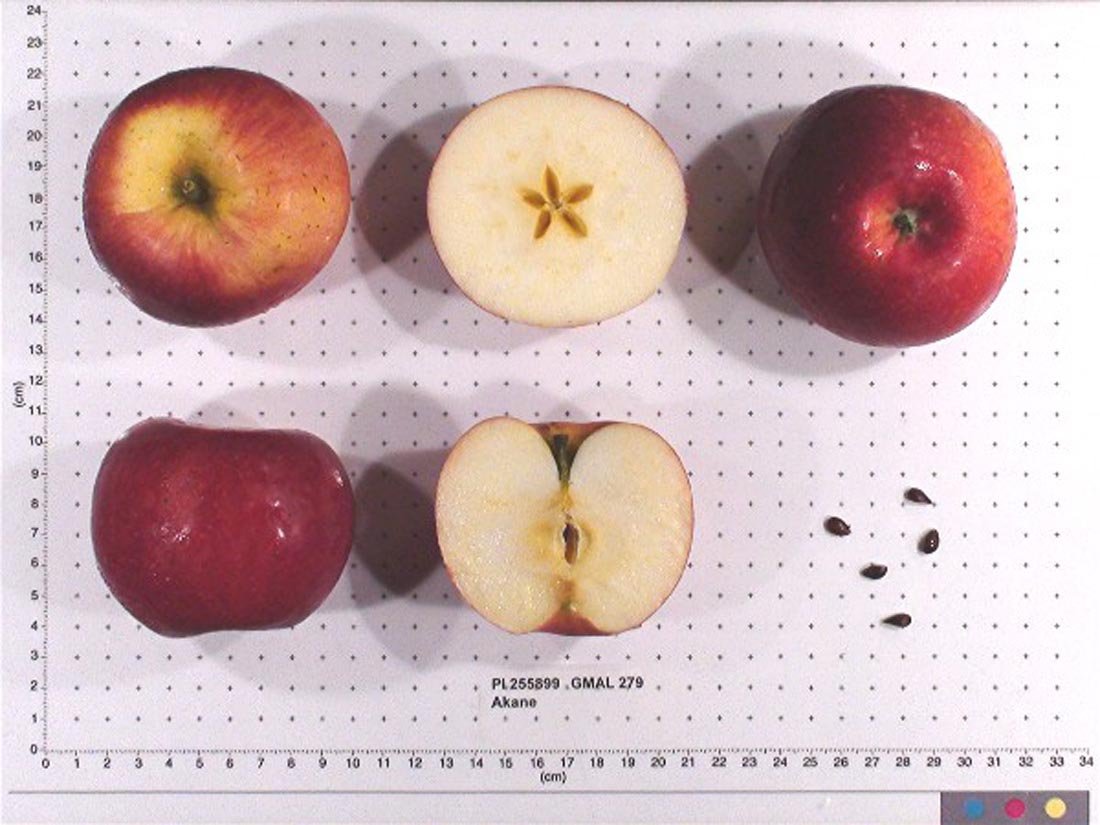














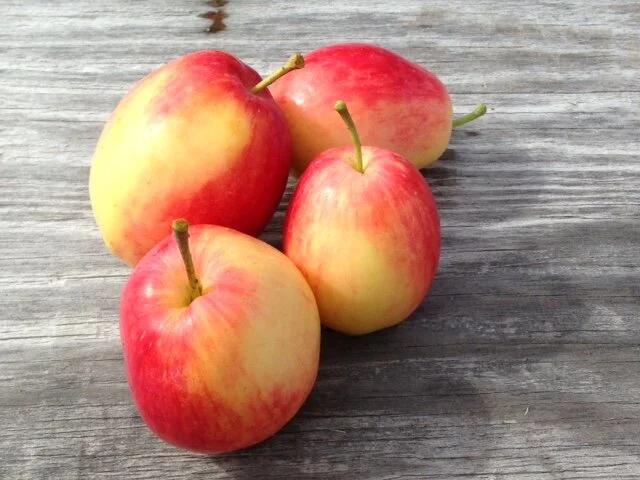
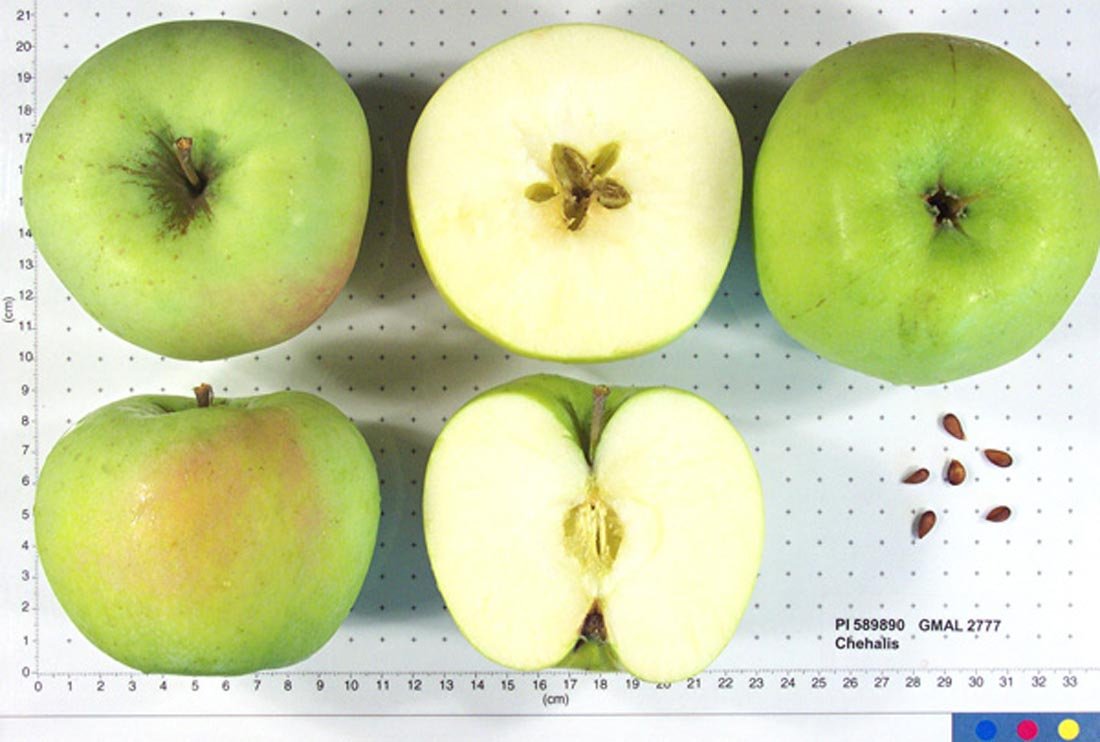








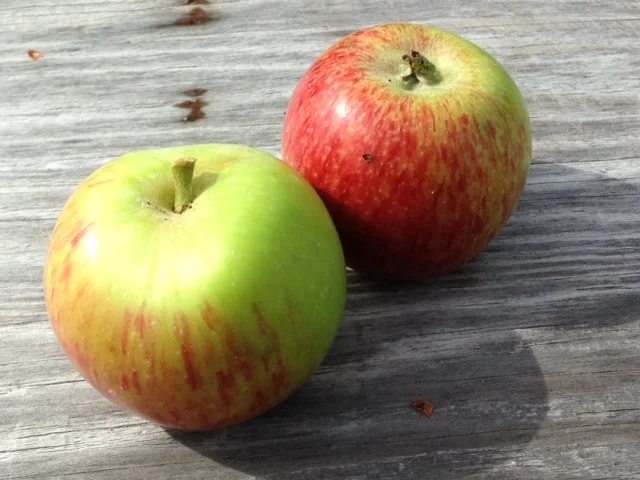













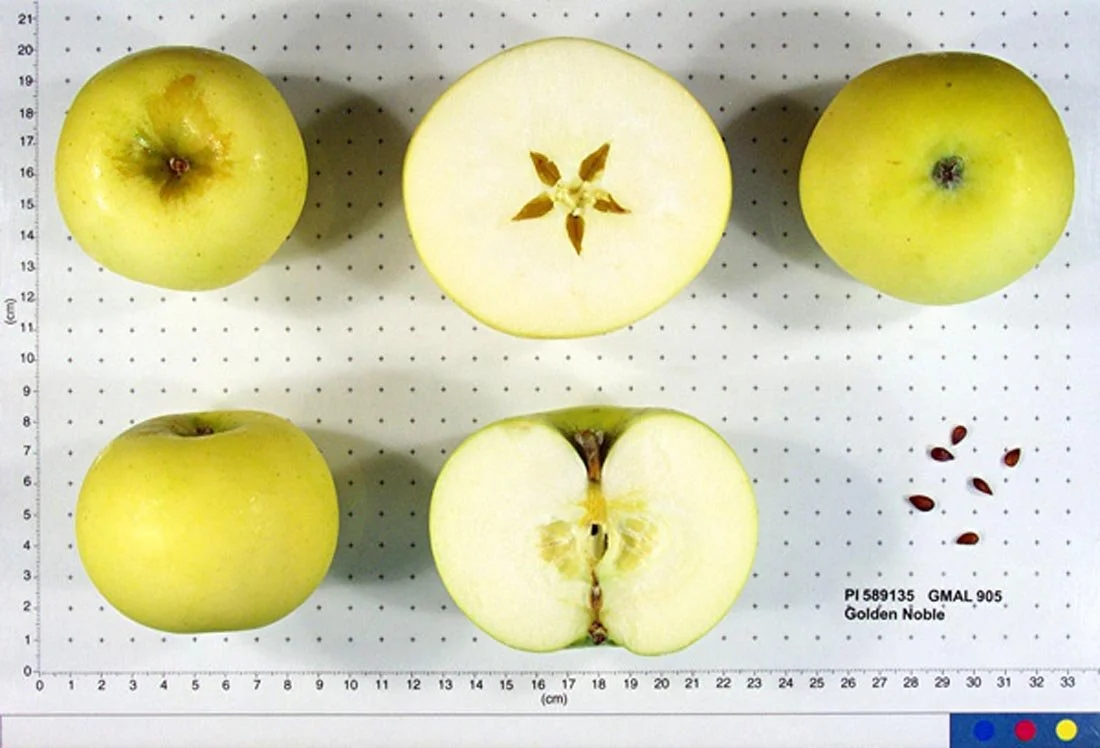



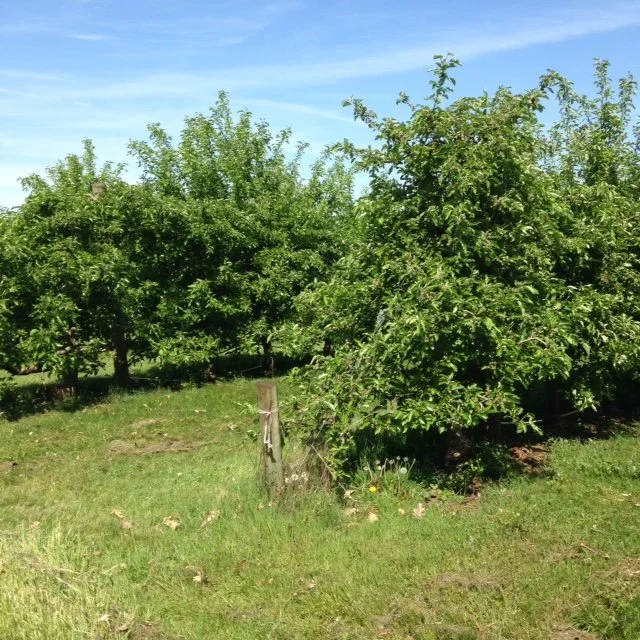








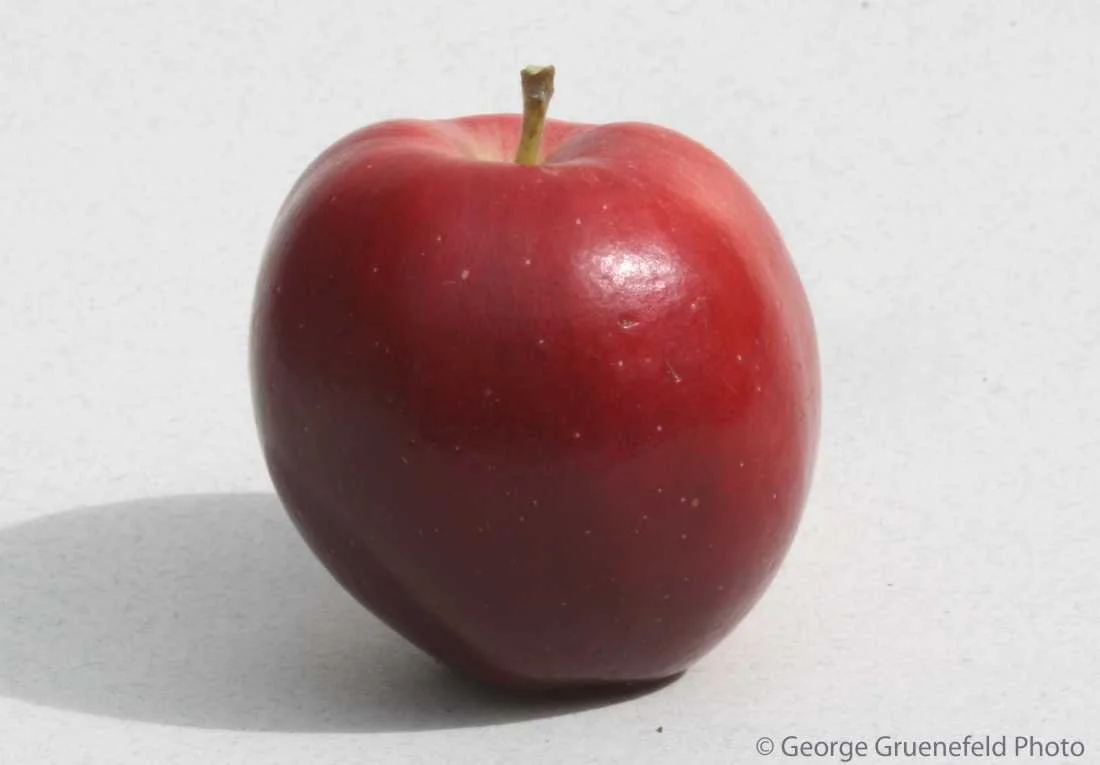













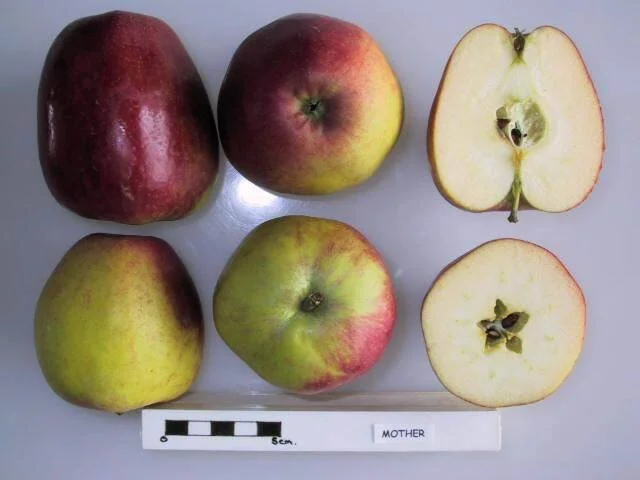


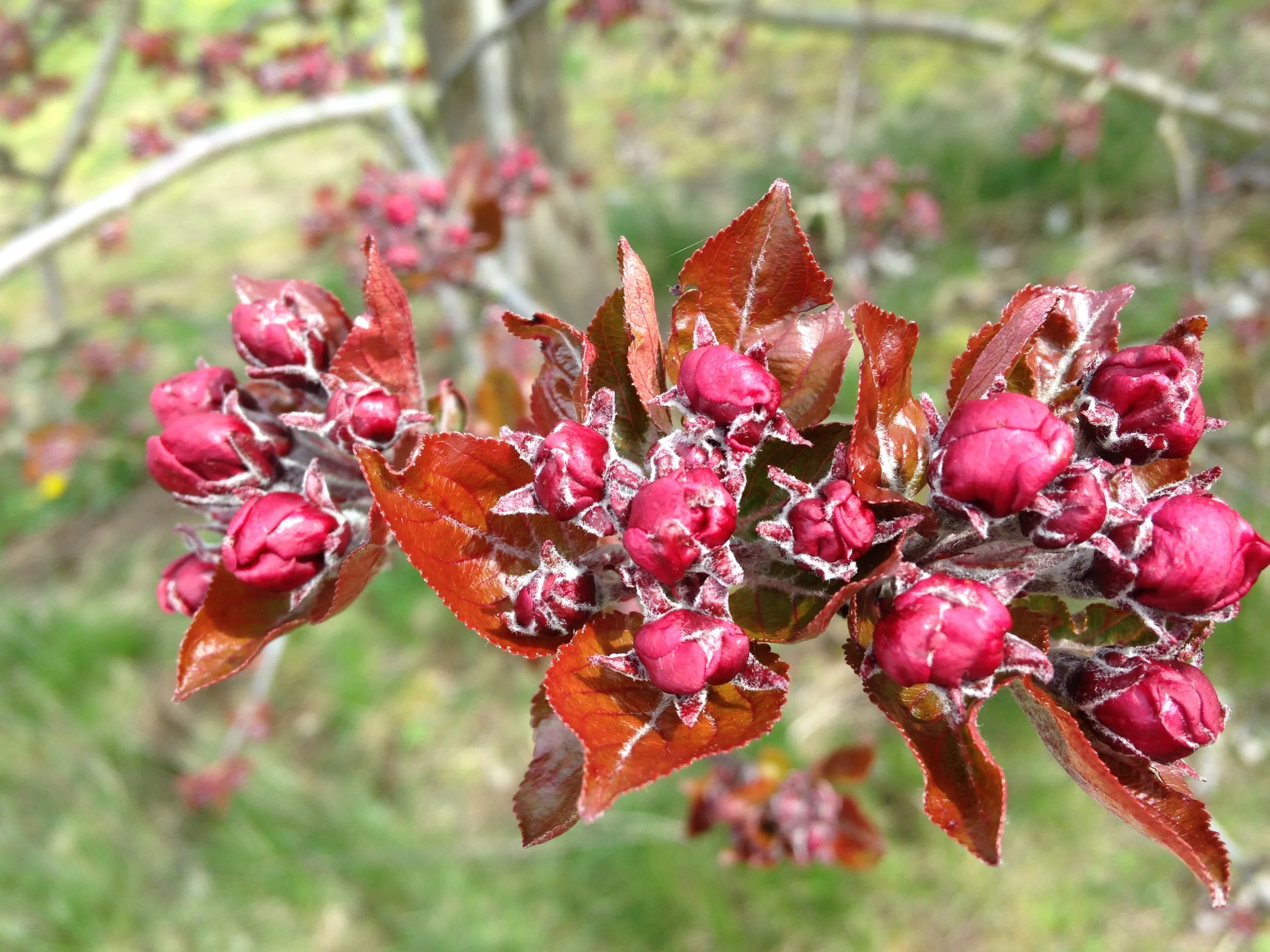

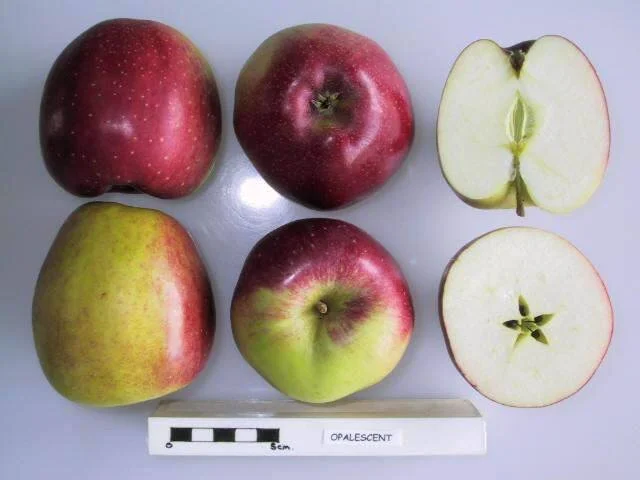





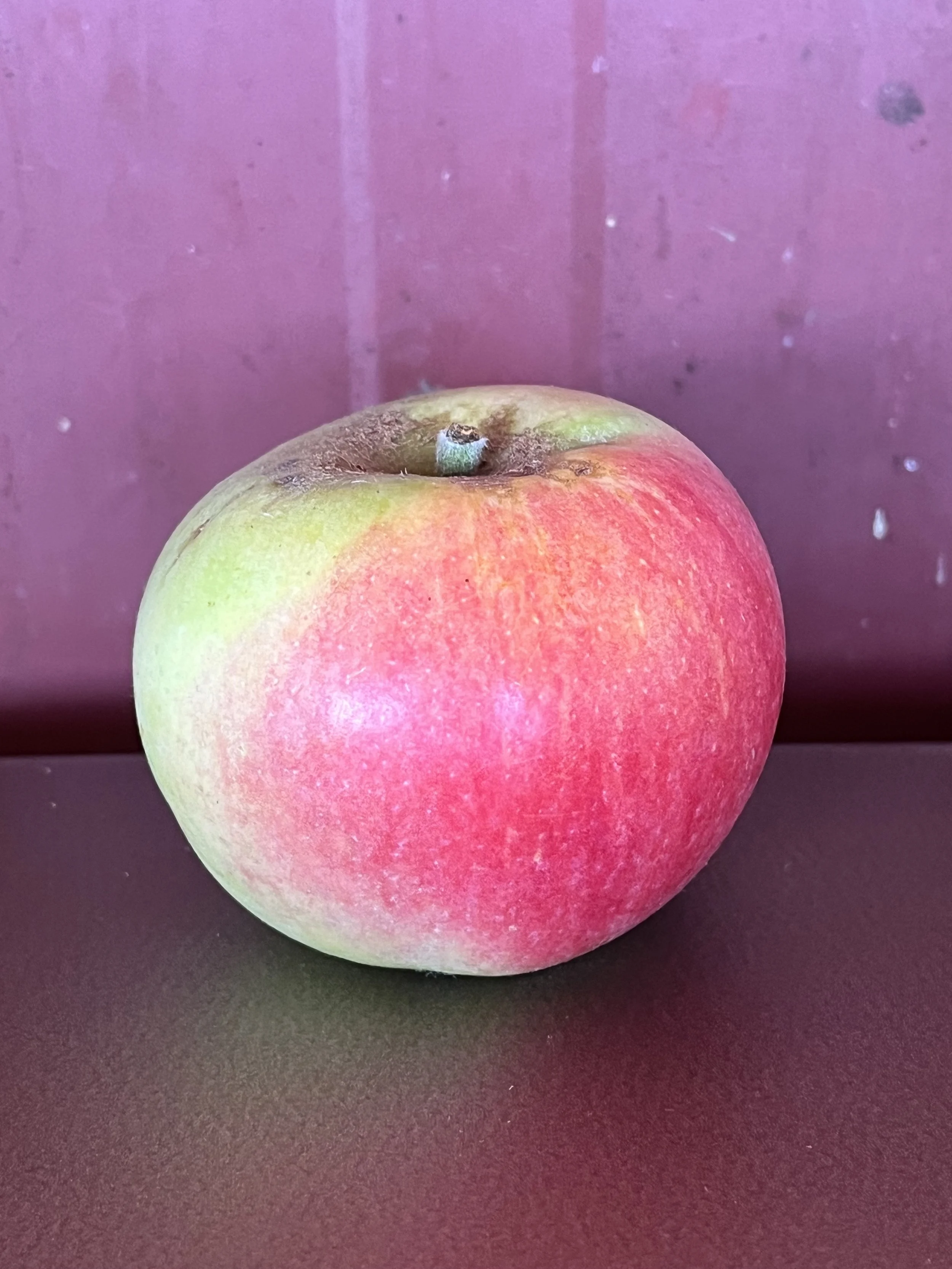



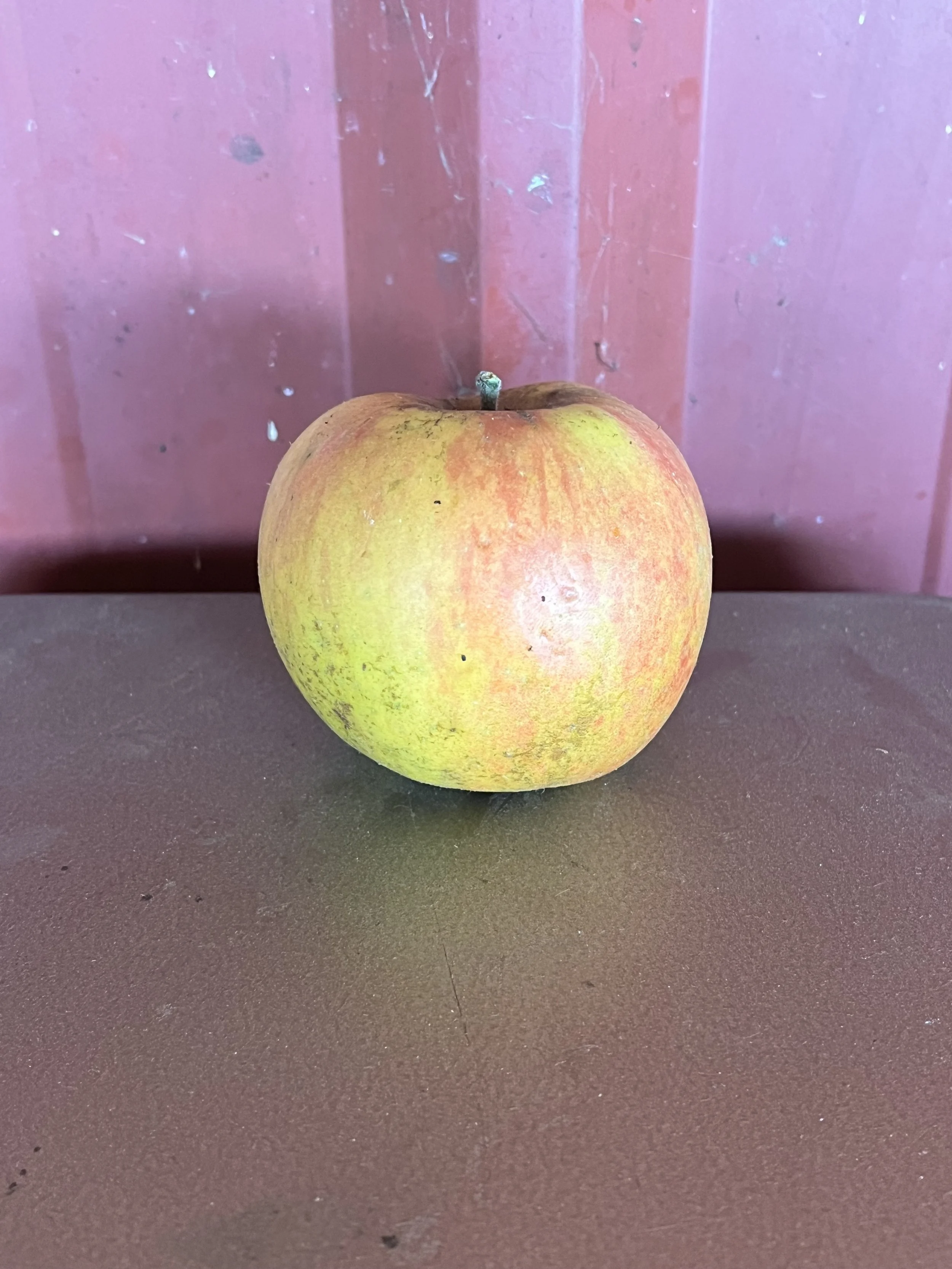










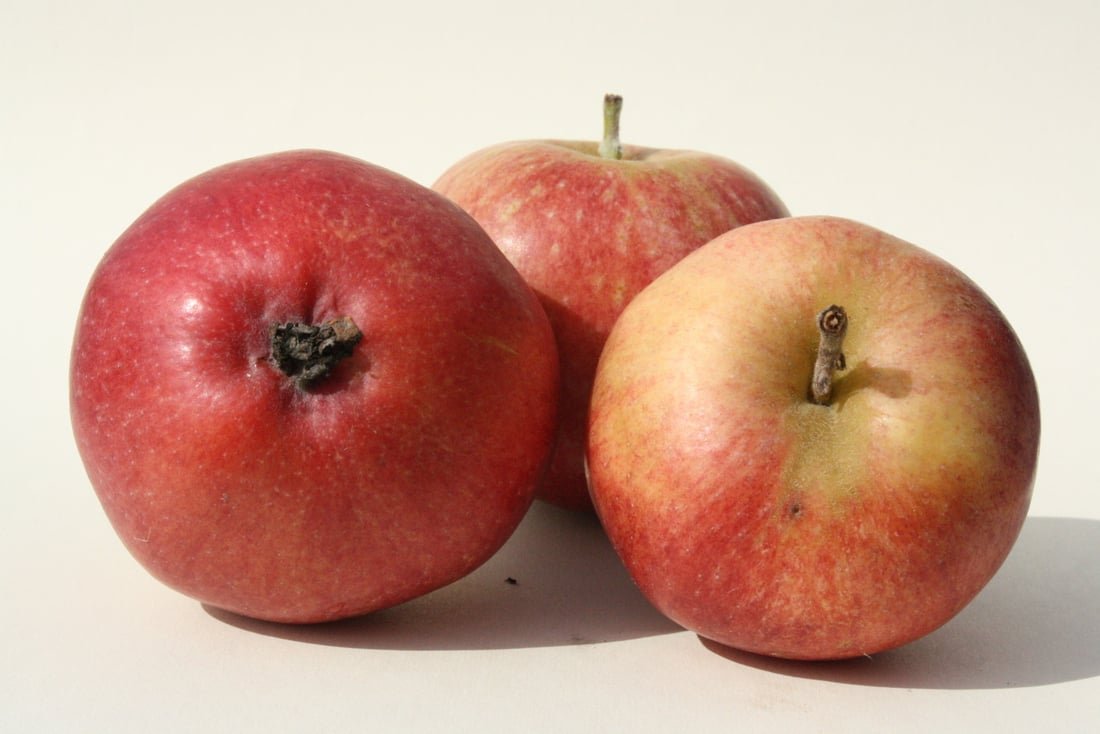






These are sold under the trade marked names of Hidden Rose and Mountain Rose. The original tree was found in the Airlie area of the Willamette Valley of Oregon. They are quite productive and vigorous but somewhat scab prone. These are more pink than red inside with nice pale green skin.
Categories: Red Flesh, dessert apple, cider apple
Tags: Heavy producer, Harvest period late, Pollination Group D